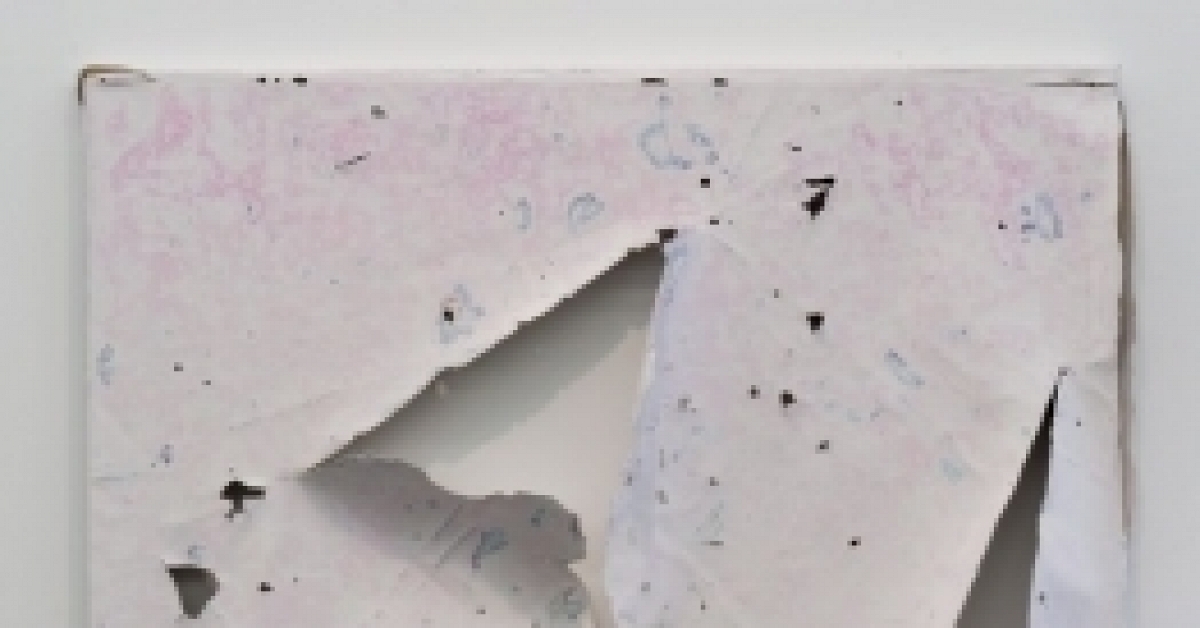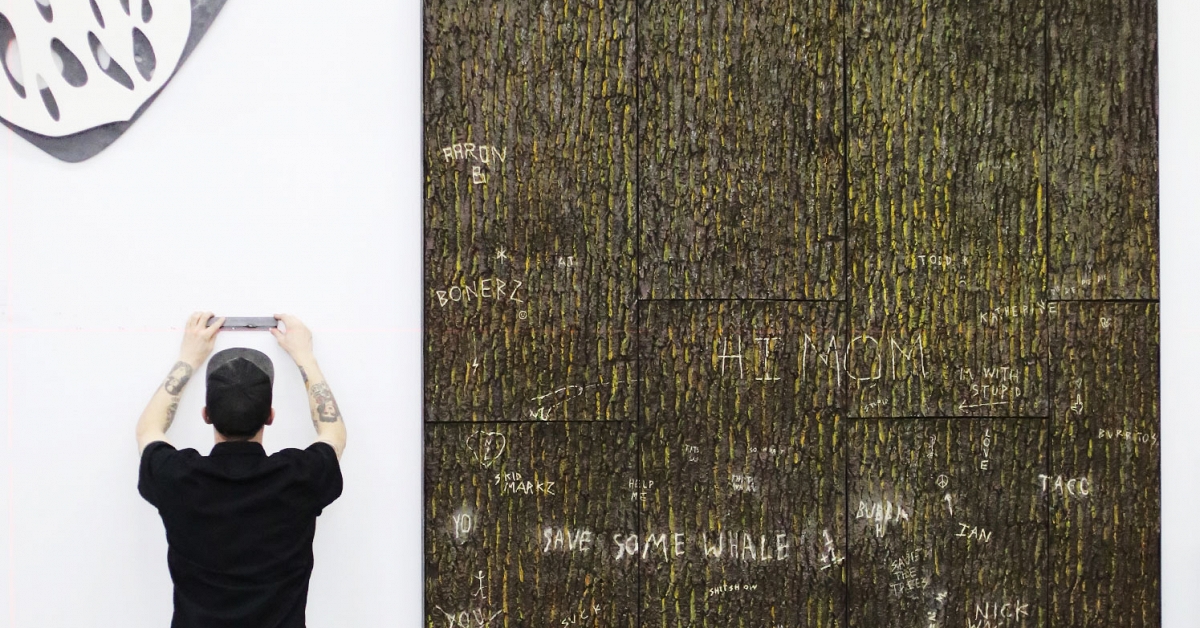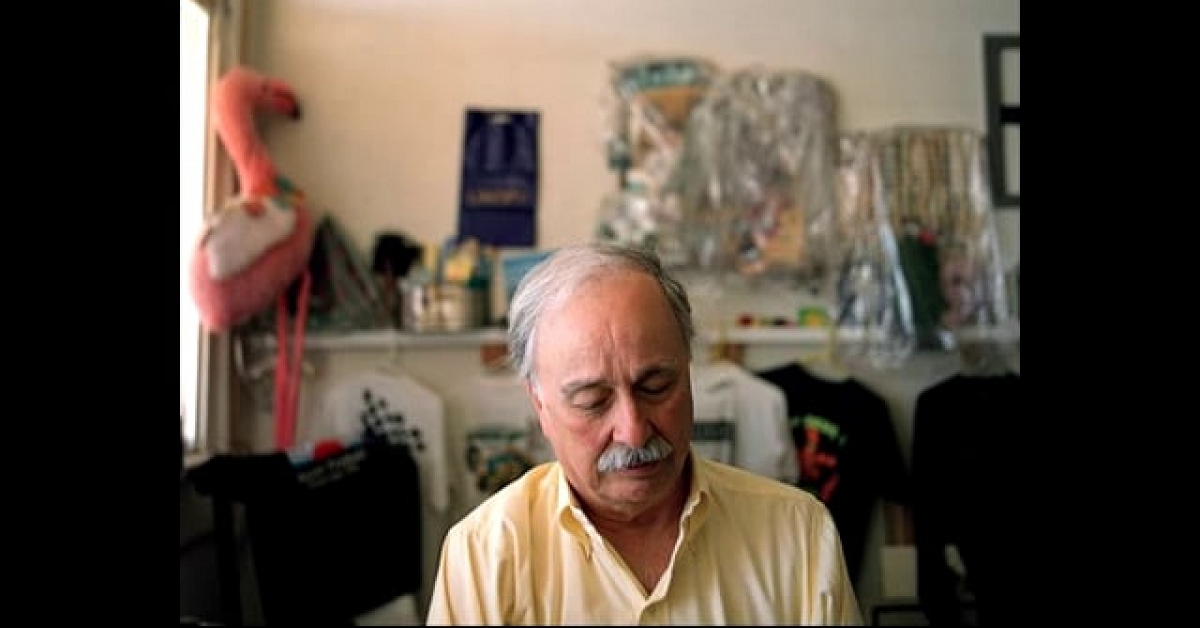Space | Shadow | Script
Ruckus / Oct 30, 2022 / by Camille Bacon / Go to Original

Above: Installation view of Space | Shadow | Script at Patron Gallery
Drawing from her sustained interest in the limits of language and translation while expounding upon her fascination with performance (both literally and obliquely speaking), Caroline Kent’s first solo exhibition at Patron Gallery in Chicago, Illinois, includes a myriad of forms: Relief sculptures reminiscent of those presented in her recent show at the Museum of Contemporary Art Chicago, paintings on raw Belgian linen, and wooden formations with paintings on linen embedded in them. Additionally, the gallery walls bear marks of floor plans of modern Mexican homes, painted directly on the surface by the artist. Several shapes from her signature geometric lexicon are also painted onto the walls. I imagine the environment Kent has constructed as a visualization of the places where love is grappled with, where the fickle ends of verbal language are exposed and, thus, where the modes of communication we need to truly witness one another can blossom.
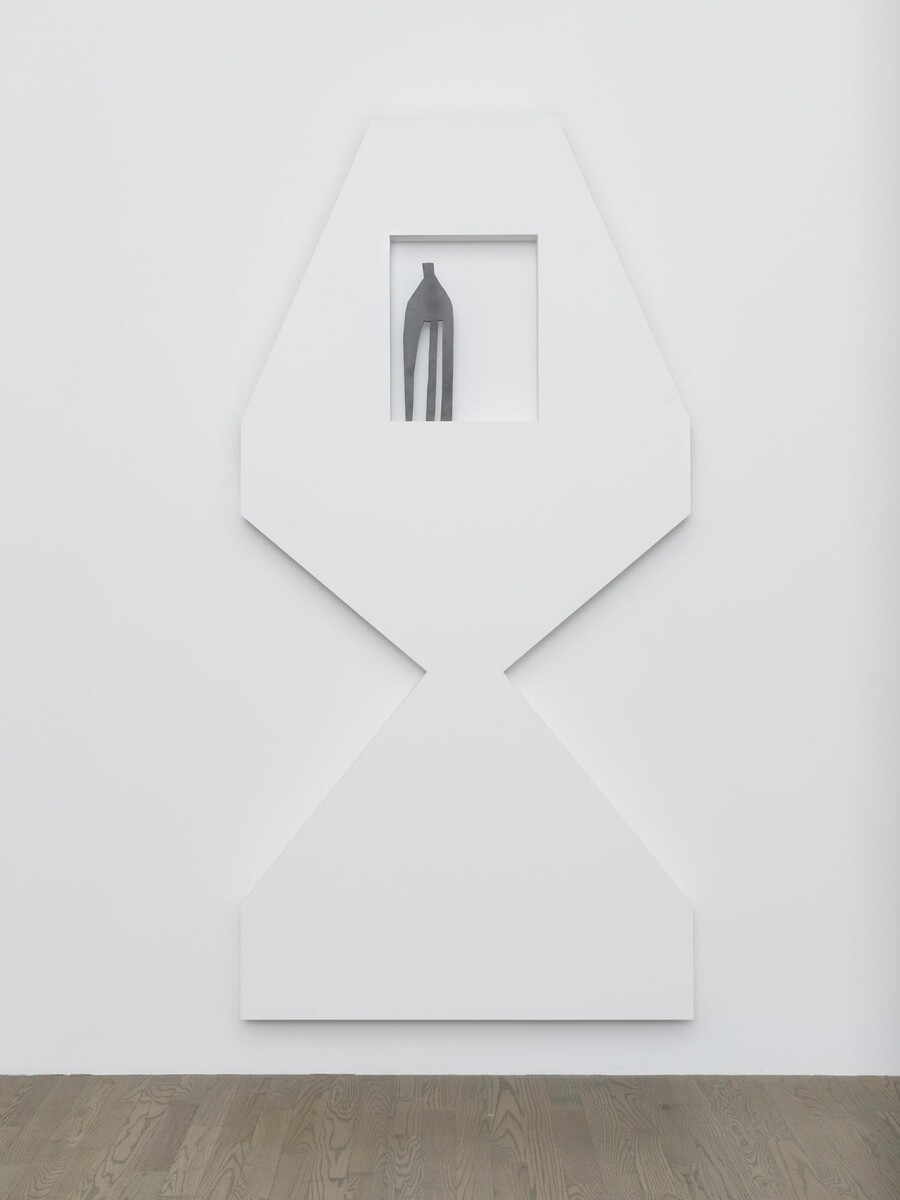
Caroline Kent, When the wall has something to say (2022)
Space | Shadow | Script got me thinking about haptic encounters and intuitive fusions of consciousness: Those strategies we use as supplements to spoken language to reach a deeper understanding of one another when words alone do not suffice. In other words, Kent’s new body of work prompts a wondering about how much the “script” matters relative to the “space” and “shadow” we enact the scenes of our everyday lives in and through. What are the components of the sort of communication that lends itself most readily to the cultivation of intimacy?
Of course, spoken language is an expedient way to come to practice the sort of deliberate, delicate regard for our own and other people’s interior lives that intimacy demands. We use it to disclose how we feel in a relatively legible manner—we know more-or-less what someone means when they tell us they’re in a frustrated, or elated, or grief-stricken, or in a celebratory mood. We use language to express our desires, to curse ourselves and others, to build entire universes, to turn a feeling into a world. We use it to facilitate connection.
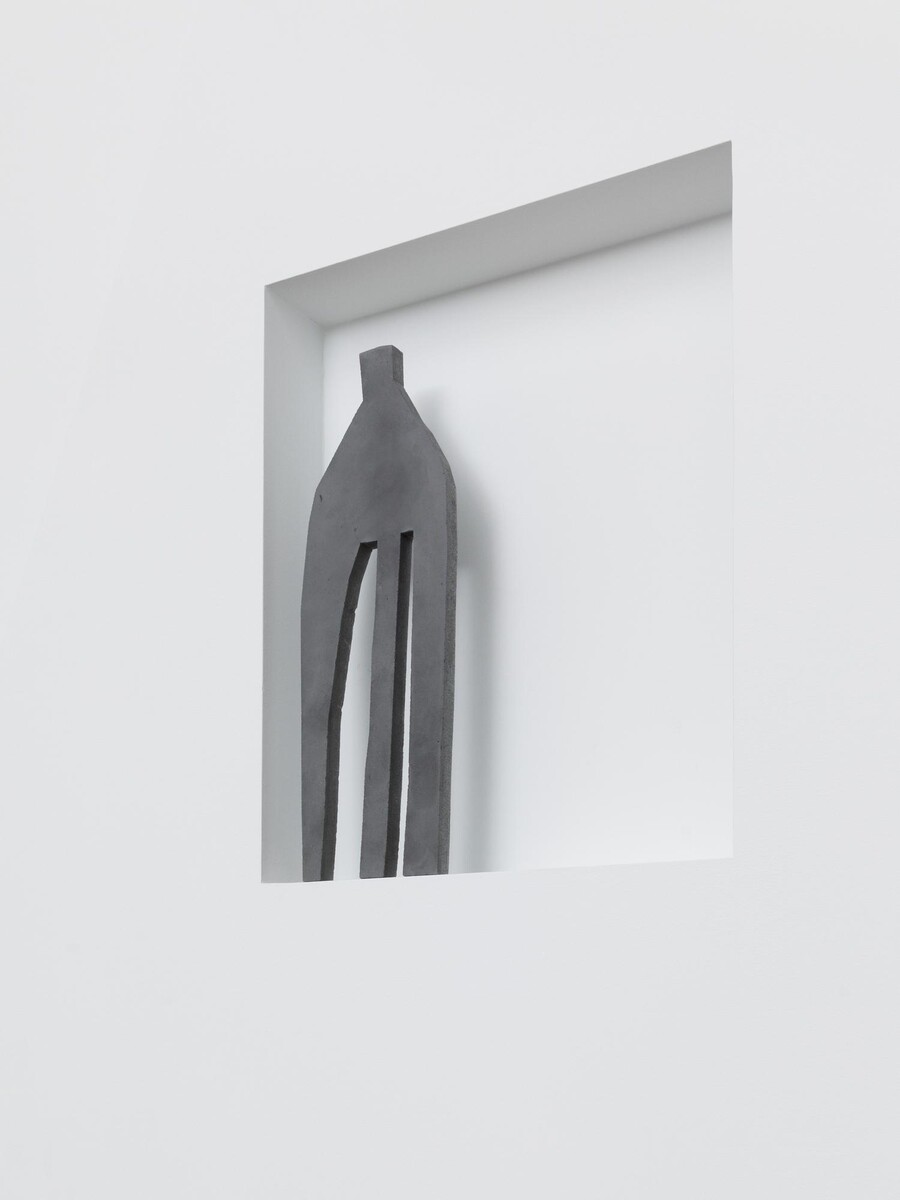
Caroline Kent, detail of When the wall has something to say (2022)
And yet, there’s also the fact that spoken language is a thinned out translation of our inner landscape to the outer world and because of its translatory function, it also inevitably reduces the sentiments our sentences strive to hold. As poet Robert Hass reminds us: “a word is elegy to what it signifies.” Thus, Space | Shadow | Script called me into communion with modes of communication that exceed the verbal and also pave new pathways to witnessing, to intimacy. Such modes include those things that refuse articulation but as they emerge from the silence, latent and fleshy, facilitate our coming to know one another.
When faced with When the wall has something to say (2022), and more specifically the scalar difference between the relief sculpture and the smaller form it holds, I was reminded of the feeling of coming to a head with the limits of language, of all the things I’ve wished to communicate but could not find the words for, of the tension between my blood and my skin and the sound the collision makes when I try to say something inarticulable, but cannot.
To this end, poet Khalil Gibran writes: “Between what is said and not meant, and what is meant and not said, most of love is lost.” The enormity of the relief sculpture relative to the diminutive form within it brings to mind the ache that accompanies the failure of language, that distance between what is “meant,” what is “said” and the love that is “lost” in the space between. The fact that the relief sculpture and the wall it emerges from are the same color also demands a sensitive sort of sensing. Rather than pulling my eyes across the surface, the work called me to look through it, to invoke a gaze capable of touching, rather than merely looking. This again reminds me of how there are many different types of ways to speak, to listen, and to snap shut the distance between the “meant” and the “said,” thereby creating more opportunities for earnest witnessing and the intimacy that flows in its stead.
In A doorway is a love letter (2022) Kent lays down two forms in slightly different shades of blue with a duo of white niches that jut out from the top and bottom of the composition, alluding to a road traveled by both forms to reach one another. The darker form takes on the shape of a passageway whereas the lighter form resembles the peaks of a mountain. Here, we apprehend both forms in the moment just before they meet, just before the “doorway” is breached and they have a chance to transmit love, intimacy and understanding.
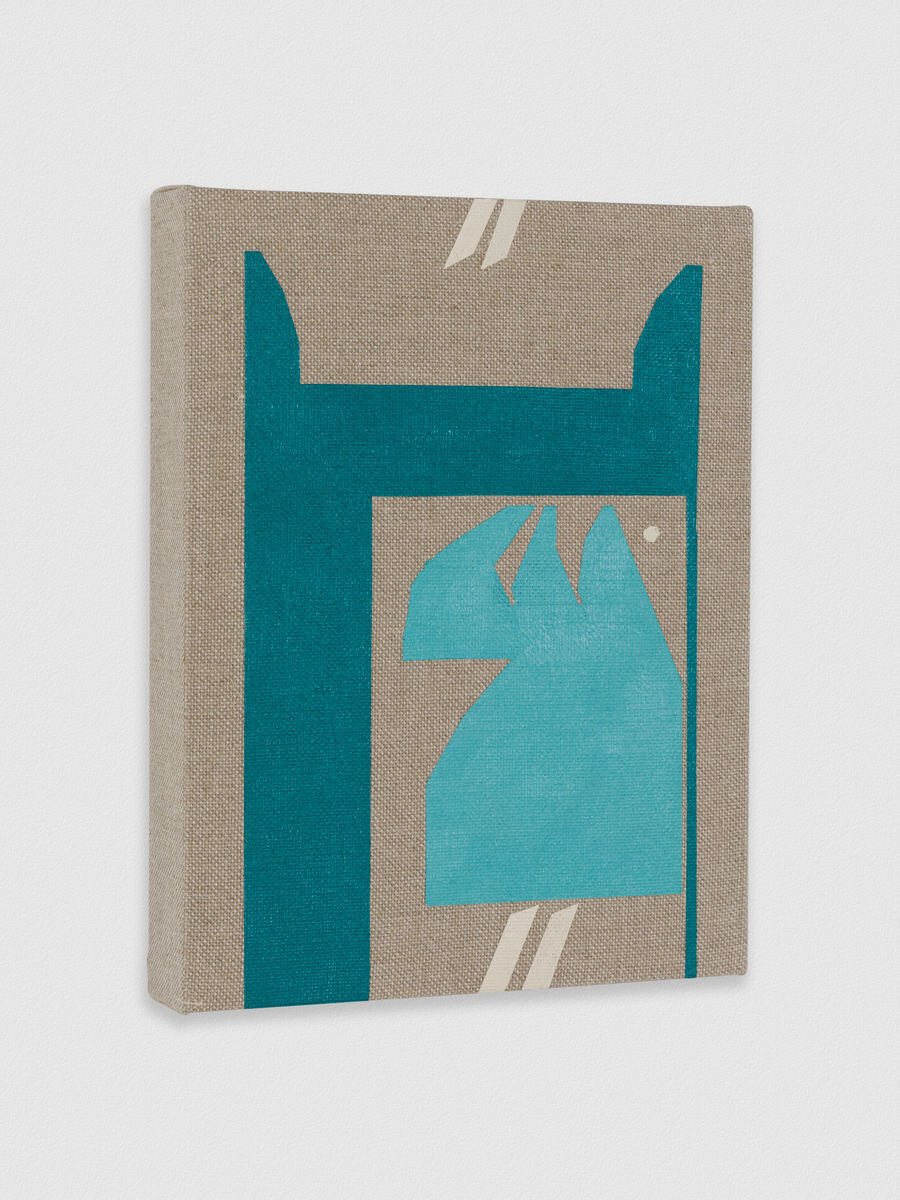
Caroline Kent, A doorway is a love letter (2022)
The magnetism between the two shapes as they slide over the negative space loads the painting with the buzzing potential energy of bodies moving towards one another, preparing to connect. The formal tension embedded in the work reminds me of the anticipation before kissing a lover after a long moment apart, a beloved one’s palm warming my back, an elongated gaze that portrays a whole ocean of compassion, the eruption of a glee from two separate bodies at the same exact moment, the capacity to settle into a moment of silence with another. These are the instances where witnessing and intimacy do not depend on verbal language alone but also on something more ancient and precious.
And as a friend and fellow writer, Joshua Segun-Lean, recently told me, part of the responsibility of being in intimacy with others is cultivating an internal imagination boundless enough to regard those we love anew again and again and again. Just as Kent’s geometric language emerges anew across this exhibition, a commitment to witnessing and the non-verbal language this task requires makes the “again, and again and again” not merely a possibility but an inevitability.



